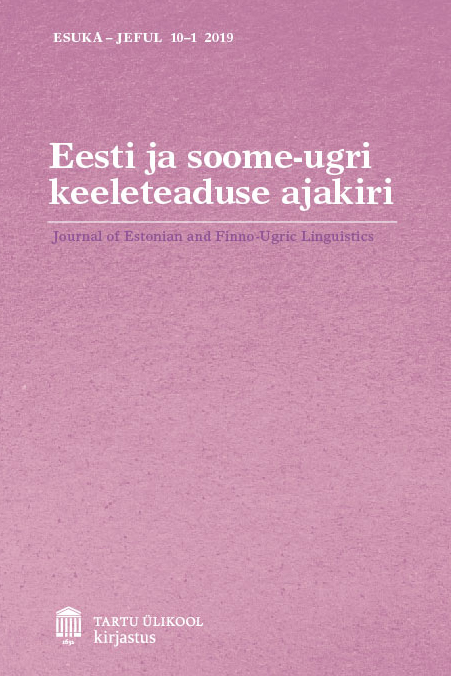Production of Estonian vowels by Finnish speakers
DOI:
https://doi.org/10.12697/jeful.2019.10.1.07Keywords:
Estonian, Finnish, L2, vowel production, acoustic analysis, eesti keel, soome keel, vokaalide hääldus, akustiline analüüsAbstract
In the study, we examined the production of Estonian vowel categories by second language (L2) speakers of Estonian (native language Finnish) and compared them to those of native Estonian (L1) speakers. The vowel systems of the two languages are very similar: all eight Finnish vowels have close counterparts in Estonian, though Estonian has one more vowel category. The vowels for acoustic analysis were extracted from the target words embedded in sentences read by both L1 and L2 informants. The results showed that using the native Finnish vowel patterns for the Estonian counterparts has been a successful strategy – due to phonetic similarity of the shared vowels in the two languages, the L2 vowels assimilate well to Finnish L1 vowel categories. The L2 learners have acquired proper tongue position for the new vowel category /õ/ in tongue height and in front-back dimension, but deviate from the L1 speakers in use of the lip rounding gesture.
Kokkuvõte. Einar Meister ja Lya Meister: Eesti vokaalid soome emakeelega keelejuhtide häälduses. Artiklis uuriti soome emakeelega keelejuhtide eesti vokaalide hääldust ja võrreldi seda eesti emakeelega keelejuhtide hääldusega. Eesti ja soome vokaalisüsteemid on väga sarnased – kõigil soome vokaalidel on eesti keeles foneetiliselt lähedane vaste. Eesti keeles on lisaks veel üks vokaalikategooria, s.o ümardamata keskkõrge tagavokaal /õ/. Uuringus kasutati eesti ja soome emakeelega keelejuhtide loetud samu lauseid, vokaalide akustiliseks analüüsiks eraldati neist rõhulised vokaalid. Kõigi vokaalide puhul leiti kolme formandi sagedused, millest esimene (F1) on seotud keele kõrgusega, teine (F2) keele ees-tagapoolsusega ja kolmas (F3) huulte ümardatusega. Tulemused näitasid, et (1) tänu soome vokaalide foneetilisele sarnasusele vastavate eesti vokaalidega oli soome emakeelega kõnelejate eesti vokaalide hääldus lähedane eesti emakeelega keelejuhtidele; (2) on omandatud küll /õ/-vokaali hääldusasend nii keele kõrguse (F1) kui ka ees-tagapoolsuse (F2) teljel, kuid F3 väärtuste põhjal paigutub soomlaste hääldatud /õ/ ümarate vokaalide rühma.
Märksõnad: eesti keel, soome keel, L2, vokaalide hääldus, akustiline analüüs


